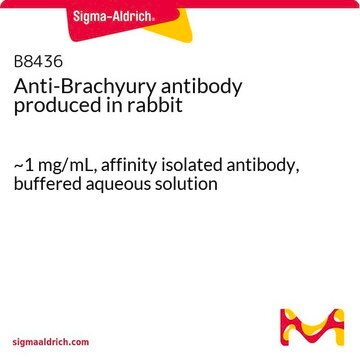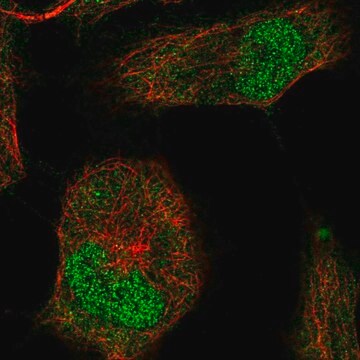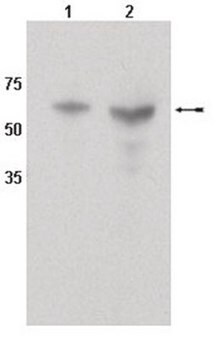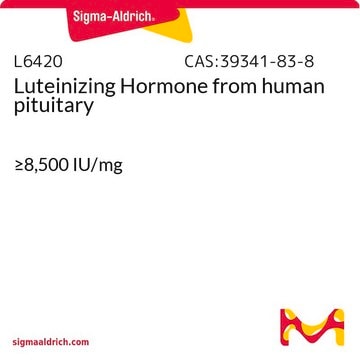04-135
Anti-Brachyury Antibody, clone 3E4.2
clone 3E4.2, Upstate®, from mouse
Synonim(y):
T brachyury (mouse) homolog, T brachyury-like, T protein, T, brachyury homolog (mouse), transcription factor T
About This Item
Polecane produkty
pochodzenie biologiczne
mouse
Poziom jakości
forma przeciwciała
purified immunoglobulin
rodzaj przeciwciała
primary antibodies
klon
3E4.2, monoclonal
reaktywność gatunkowa
human
producent / nazwa handlowa
Upstate®
metody
western blot: suitable
moc wejściowa
sample type mesenchymal stem cell(s)
izotyp
IgG1κ
numer dostępu NCBI
numer dostępu UniProt
Warunki transportu
wet ice
docelowa modyfikacja potranslacyjna
unmodified
informacje o genach
human ... TBXT(6862)
Opis ogólny
Specyficzność
Immunogen
Zastosowanie
Stem Cell Research
Mesenchymal Stem Cells
Jakość
Western Blotting:
Recommended working dilutions are 1:1000.
Opis wartości docelowych
Postać fizyczna
Przechowywanie i stabilność
Inne uwagi
Informacje prawne
Oświadczenie o zrzeczeniu się odpowiedzialności
Not finding the right product?
Try our Narzędzie selektora produktów.
Kod klasy składowania
12 - Non Combustible Liquids
Klasa zagrożenia wodnego (WGK)
WGK 1
Temperatura zapłonu (°F)
Not applicable
Temperatura zapłonu (°C)
Not applicable
Certyfikaty analizy (CoA)
Poszukaj Certyfikaty analizy (CoA), wpisując numer partii/serii produktów. Numery serii i partii można znaleźć na etykiecie produktu po słowach „seria” lub „partia”.
Masz już ten produkt?
Dokumenty związane z niedawno zakupionymi produktami zostały zamieszczone w Bibliotece dokumentów.
Nasz zespół naukowców ma doświadczenie we wszystkich obszarach badań, w tym w naukach przyrodniczych, materiałoznawstwie, syntezie chemicznej, chromatografii, analityce i wielu innych dziedzinach.
Skontaktuj się z zespołem ds. pomocy technicznej







